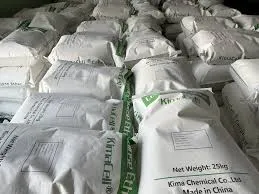
డిసెం . 15, 2024 11:55 Back to list
hec vs hpmc
Understanding HEC vs HPMC A Comprehensive Comparison
Hydroxyethyl cellulose (HEC) and hydroxypropyl methylcellulose (HPMC) are two essential cellulose derivatives that serve a wide range of applications in various industries, including pharmaceuticals, food, cosmetics, and construction. While both HEC and HPMC are derived from cellulose, they possess distinct properties that make them suitable for different uses. This article aims to explore the key differences and similarities between HEC and HPMC, their chemical structures, physical properties, applications, and benefits.
Chemical Structure and Synthesis
HEC and HPMC are both non-ionic, water-soluble polymers, but their chemical structures differ due to the functional groups introduced during their synthesis. HEC is formed by the etherification of cellulose with ethylene oxide, resulting in a product that contains hydroxyethyl groups attached to the glucose units. In contrast, HPMC is synthesized by modifying cellulose with both hydroxypropyl and methyl groups, leading to a polymer with varying degrees of substitution. The presence of these different substituents significantly influences their solubility, viscosity, and thermal stability.
Physical Properties
One of the primary differences between HEC and HPMC lies in their physical properties. HEC typically exhibits a lower viscosity compared to HPMC at similar concentrations. This characteristic makes HEC a preferred choice for applications requiring low viscosity solutions, such as in some types of coatings and adhesives. On the other hand, HPMC is known for its superior thickening ability and can form highly viscous solutions, which is particularly advantageous in formulations where gel-like consistency is desired.
Both HEC and HPMC are soluble in water, but they exhibit different solubility characteristics. HEC dissolves more readily at higher temperatures, while HPMC maintains its solubility over a broader range of temperatures and pH levels, making it more versatile in various formulations.
Applications
hec vs hpmc

The applications of HEC and HPMC span several industries, each exploiting their unique properties. In the pharmaceutical industry, HPMC is often used as a binder in tablet formulations and a thickening agent in suspensions due to its excellent gel-forming ability. It also serves as a controlled-release agent, allowing for the sustained release of active ingredients.
HEC, on the other hand, finds its primary use in cosmetics and personal care products. It acts as a thickener, emulsifier, and film-forming agent, contributing to the stability and texture of creams, lotions, and shampoos. Additionally, HEC is often utilized in the construction industry as a water-retention agent in plaster and cement formulations, improving workability and preventing cracking.
In the food industry, both HEC and HPMC can be found in various products. HPMC is commonly used as a food additive, offering functionalities such as stabilizing emulsions and enhancing the texture of processed foods. HEC, while less common in food applications, occasionally serves as a thickening agent in sauces and dressings.
Benefits and Considerations
The choice between HEC and HPMC often depends on the specific requirements of the application. HEC is advantageous for systems that require low viscosity and improved water retention, making it suitable for coatings and construction materials. In contrast, HPMC's versatility and ability to form viscous gels make it ideal for pharmaceutical and food applications.
However, formulators must consider factors such as temperature sensitivity, compatibility with other ingredients, and desired end-product characteristics when selecting between HEC and HPMC.
Conclusion
In summary, hydroxyethyl cellulose (HEC) and hydroxypropyl methylcellulose (HPMC) are both valuable cellulose derivatives with unique properties that cater to a wide range of applications. While HEC is preferred for low viscosity solutions and construction materials, HPMC excels in pharmaceuticals and food products due to its excellent thickening and gel-forming abilities. Understanding the differences between these two polymers allows manufacturers and formulators to make informed choices that enhance the quality and performance of their products.
-
Versatile Hpmc Uses in Different Industries
NewsJun.19,2025
-
Redispersible Powder's Role in Enhancing Durability of Construction Products
NewsJun.19,2025
-
Hydroxyethyl Cellulose Applications Driving Green Industrial Processes
NewsJun.19,2025
-
Exploring Different Redispersible Polymer Powder
NewsJun.19,2025
-
Choosing the Right Mortar Bonding Agent
NewsJun.19,2025
-
Applications and Significance of China Hpmc in Modern Industries
NewsJun.19,2025







